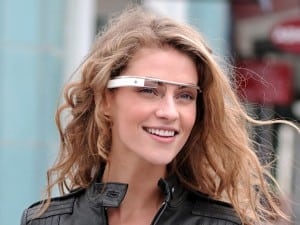| Author | Affiliation |
|---|---|
| Clark Rosenberry, MD | William Beaumont Army Medical Center, Department of Emergency Medicine and Department of Aviation medicine, Fort Bliss, Texas |
Envision a shift years from now. You treat patients but never sit at a computer to document or enter orders. You wear a set of clear glasses with a computer screen built into the lens. Navigation of medical records occurs by voice command into a nearly invisible speaker built into your eyewear’s frame. No lag exists between your spoken command and the instantaneous flash of information desired. Patient notes and orders are entered immediately and hands free from voice controlled dictation before you leave a patient’s room. You finish your procedure note for a central line or intubation before you remove your gloves because you verbally entered that information as it was performed. During physical exam, you command the photo of a patient’s wound or bedside ultrasound findings from a miniscule camera inconspicuously situated into the frame of your eyewear. The images are uploaded and available immediately. Your lens alerts you the second critical lab values result. Electrocardiograms are transmitted to your lens too, and previous tracings are retrieved automatically. To page a consultant, you simply demand it from your hands free mobile command post. Prescriptions are sent electronically to and instantly received by local pharmacies once you speak the words. Drug doses, side effects, mechanism of action, and retail costs are all linked seamlessly from your order menu. For every fleeting query, you state what you want from which source, and it appears immediately. This is the future of medicine.
Google Glass is a voice controlled wearable head mount display smart-phone-like computer currently tested by select applicants for $1500 (Figure 1).1,2 Such hardware may be our first glimpse of a spectacle-based computer-integrated future. Apache helicopter pilots have had display mounts built into their helmets that stream night vision imagery for years. Dragon Dictation is a program that permits hands free patient encounter documentation. The iPhone5’s Siri searches for answers to our questions by voice command. Epocrates, Lexicomp, Sanford’s Antibiotic Guide, and Pub Med yield valuable information we need every day to function optimally in our respective fields. Current microprocessors can deliver information as fast as we can request it. Wireless networks remotely link us to the internet. Google Fiber is supposed to provide internet connections 100 times faster than broadband.
Physicians are bogged down by the inefficiencies of data retrieval and transcription. The average emergency physician (EP) spends 30–40% of total shift time in a medical record.3 One study found EPs spend only 25% of total shift time in direct patient care.4 The technology already exists for the aforementioned vision. The individual constituents just need to be seamlessly integrated on a convenient interface. Wait times and costs could decrease. Improved efficiency could amplify profits. Physician experience and knowledge could accelerate. If this brighter future is not desired, it is needed. The quantitative and qualitative demand for medical care burdened to every provider seems only to increase. I encourage you to push us to this bright, more efficient, and more capable future. Advise your electronic medical record carrier to mold their interface into new applications for hardware such as the Google Glass and inevitable subsequent comparable models, integrate highly useful software adjuncts, and foster the adoption of these progressing technologies.
Footnotes
Address for Correspondence: Clark Rosenberry, MD. Department of Emergency Medicine, Irwin Army Community Hospital, Building 600, Caisson Hill Road, Fort Riley, Kansas 66442. Email: crosenberry04@jcu.edu. 2 / 2014; 15:94 – 95
Submission history: Revision received May 30, 2013; Submitted July 31, 2013; Accepted August 6, 2013
Conflicts of Interest: By the WestJEM article submission agreement, all authors are required to disclose all affiliations, funding sources and financial or management relationships that could be perceived as potential sources of bias. The authors disclosed none.
REFERENCES
1. Hamayon Google glass photos collection. Comingmore Web Site. [Accessed June 12, 2013]. Available at: http://comingmore.com/google-glass-photos-collection/.
2. Mack E. Brin: google glass lands for consumers in 2014. CNET Web Site. [Accessed June 12, 2013]. Available at: http://news.cnet.com/8301-17938_105-57462641-1/brin-google-glass-lands-for-consumers-in-2014/.
3. Patel S, Rais A, Kumar A. Focus on: the use of scribes in the emergency department. ACEP Web Site.[Accessed July 29, 2013]. Available at: http://www.acep.org/Continuing-Education-top-banner/Focus-On–The-Use-of-Scribes-in-the-Emergency-Department/.
4. Füchtbauer LM, Nørgaard B, Mogensen CB. Emergency department physicians spend only 25% of their time on direct patient care. Dan Med J. 2013;60:A4558. [PubMed]



